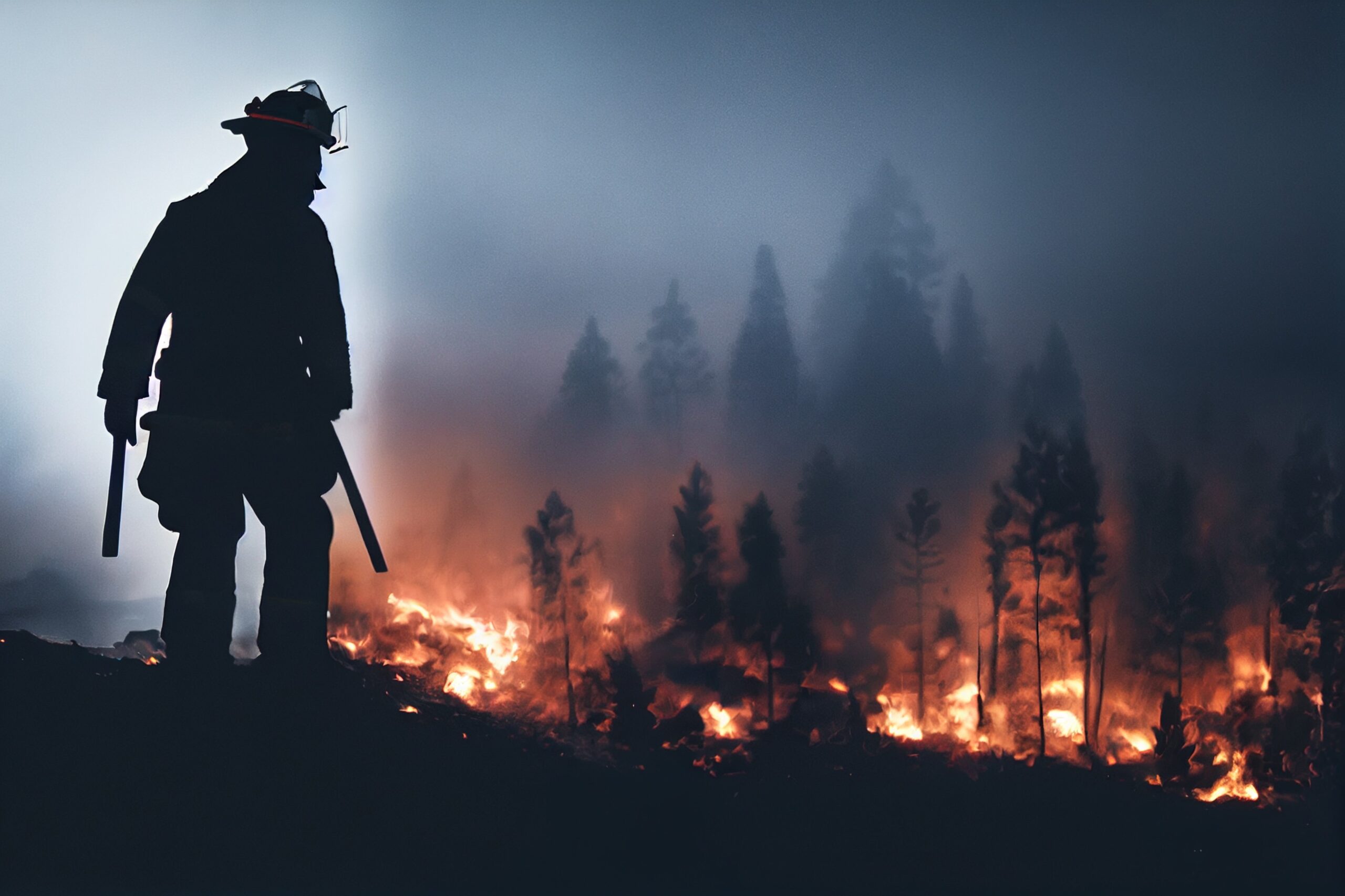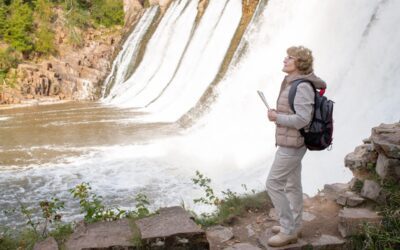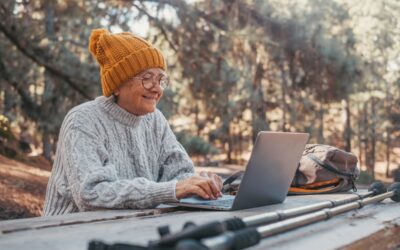Last updated on August 18th, 2024
Featured image: Unpredictable weather patterns and climate change means women need to be planning for emergencies while travelling | Photo by By AveCalvar on Envato
Preparing for natural disasters
by Carolyn Ray
Knowing how to be prepared for any situation doesn’t mean expecting the worst, but it can mean being ready to handle challenges and continue your travels with confidence. In 2024 (as of July 9), there have been 15 confirmed weather/climate disaster events with losses exceeding $1 billion each to affect United States, including tornadoes, flooding and severe weather. Around the world, countries are seeing record-breaking levels of forest fires, particularly in boreal forests. Weather patterns are becoming more unpredictable and 40% of the world’s oceans are experiencing marine heat waves, which is setting off alarms among scientists because of the impact on ocean ecosystems, including fish and other marine life.
At the time of writing, devastating forest fires are raging out of control across the US and Canada, including Jasper National Park in Alberta and British Columbia. There are 6,500 firefighters battling the enormous forest fire in California, which has spread over 626 square miles (1,621 square kilometres) since allegedly being started by arson in a park in the Sierra Nevada foothills east of the Sacramento Valley city of Chico. According to ESRI, there are 638 active fires across North America (see the live map here).
Whether it’s an earthquake, tsnami or forest fire, here are some tips to consider when you’re planning travel, either close to home or in other parts of the world. Due to the frequency of earthquakes (and hurricanes), register with your government program (STEP in the US or Canadians Abroad) to receive alerts and make it easier to find you in an emergency.
“The City of Vancouver has good suggestions on their web page some of which can be used when travelling. When I used to teach emergency preparedness I told people, if nothing else, put a pair of solid soled shoes under your bed. In the day people usually have shoes in but in bed we are barefoot and after a major earthquake there is generally a lot of broken glass, from windows and fallen stuff. The other is to make sure there is not a large framed picture over the head of the bed unless it is solidly bolted to the wall (a large glass frame literally is fatal if crashed in your head while you sleep.” — Maria
Planning for earthquakes
On January 4, 2020, three days before Puerto Rico’s 6.4 magnitude earthquake on January 7, I was in Ponce on a family vacation. There had been tremors in the early morning that awoke us from our sleep, but I never imagined what was to come.
It was at that time that I realized how unprepared I was for an earthquake or tsunami. Until then, I had never considered that the Caribbean and North American tectonic plates are scraping by each other, creating a huge fault that extends from the Puerto Rico Trench to the coast of Central America. Today, I always travel with an earthquake app, such as SkyAlert, MyEarthquake and MyShake.
To help us all travel safely and well, we’ve curated some tips from Discover Puerto Rico and our readers to consider when you travel to earthquake and tsunami-prone areas.
- If you are INDOORS — STAY THERE! Get under a desk or table and hang on to it (Drop, Cover, and Hold on!) or move into a hallway or against an inside wall. STAY CLEAR of windows, fireplaces, and heavy furniture or appliances. GET OUT of the kitchen, which is a dangerous place (things can fall on you). DON’T run downstairs or rush outside while the building is shaking or while there is danger of falling and hurting yourself or being hit by falling glass or debris.
- If you are OUTSIDE — get into the OPEN, away from buildings, power lines, chimneys, and anything else that might fall on you.
- If you are DRIVING — stop, but carefully. Move your car as far out of traffic as possible. DO NOT stop on or under a bridge or overpass or under trees, light posts, power lines, or signs. STAY INSIDE your car until the shaking stops. When you RESUME driving, watch for breaks in the pavement, fallen rocks, and bumps in the road at bridge approaches.
- If you are in a MOUNTAINOUS AREA — watch out for falling rock, landslides, trees, and other debris that could be loosened by quakes.
- If you are near the OCEAN — see these safety rules from NOAA’s Tsunami Warning Center.
What to pack on every trip
In addition to extra batteries, water and food, here are three things to bring on every trip:
1. Headlamp or Flashlight: Never leave home without a headlamp or flashlight. You never know when a natural disaster might strike. Find a headlamp here.
2. First Aid Kit: There are many travel-size variations available that contain the first aid essentials to help treat common travel injuries such as blisters, cuts and grazes. bandages and sterilizer, like this one from Long Run. There are also many different pre-made kits that are available that can be kept in your car or house.
3. Safety Whistle: We like ones that have a lanyard, float or attach to a backpack, keeping it within reach. There are also many options available, some with lights and alternating signals, like this one from Albatross.
“My heart goes out to all Canadians and particularly the residents of Jasper which I was lucky to visit earlier this year. It’s shocking to see the devastation and to know the hard road ahead. But you guys and we Aussies have a lot in common, and I know you will support each other and come through this to rebuild and move ahead.” — Margaret B., Australia
Planning for forest fires
JourneyWoman reader Debbie Dotson was in Jasper, Alberta when the 20,000 people in the town were unexpectedly evacuated to avoid a fast-moving forest fire. She says it’s important to be ready for anything with a ‘Go Bag’.
“When exploring new destinations, it’s crucial to be prepared for unexpected emergencies,” she shared in our Solo Travel Wisdom group. “A well-packed Go Bag can make all the difference.”
She recommends:
- Documents: Copies of passport, ID, insurance cards, and emergency contacts
- Cash and a spare credit card
- Personal medications and any medical necessities
- Portable phone charger (we recommend this Anker brand which charges quickly and allows you to charge more than one device at a time)
- Small hygiene kit (toothbrush, soap, hand sanitizer)
- Keep your go bag light, accessible, and tailored to your destination. Review and update its contents regularly. I learned that the hard way, tiny toothpaste, no toothbrush!
“Check what local apps are available. In Japan you’ll know if an earthquake has happened within the country as everyone’s phones will ping with alerts at the same time!” — Janet
From the Government of Alberta
From the American Red Cross.
More on Safety
When Something Goes Wrong: What to Do if You’re Injured While Travelling
Anything can happen on a vacation. Here are some first-hand tips for women to plan for an unexpected injury.
JourneyWoman Webinar: Women’s Safety and Cybersecurity on November 19, 2024
Join our panel of experts on November 19 to learn how to protect yourself against cybersecurity at home and while traveling.
Travel Technology: What is a VPN or Virtual Private Network?
Our Travel Technology series answers the question: ‘what is a VPN’, to help you protect your privacy on public networks.







0 Comments
We always strive to use real photos from our own adventures, provided by the guest writer or from our personal travels. However, in some cases, due to photo quality, we must use stock photography. If you have any questions about the photography please let us know.
Disclaimer: We are so happy that you are checking out this page right now! We only recommend things that are suggested by our community, or through our own experience, that we believe will be helpful and practical for you. Some of our pages contain links, which means we’re part of an affiliate program for the product being mentioned. Should you decide to purchase a product using a link from on our site, JourneyWoman may earn a small commission from the retailer, which helps us maintain our beautiful website. JourneyWoman is an Amazon Associate and earns from qualifying purchases. Thank you!
We want to hear what you think about this article, and we welcome any updates or changes to improve it. You can comment below, or send an email to us at [email protected].